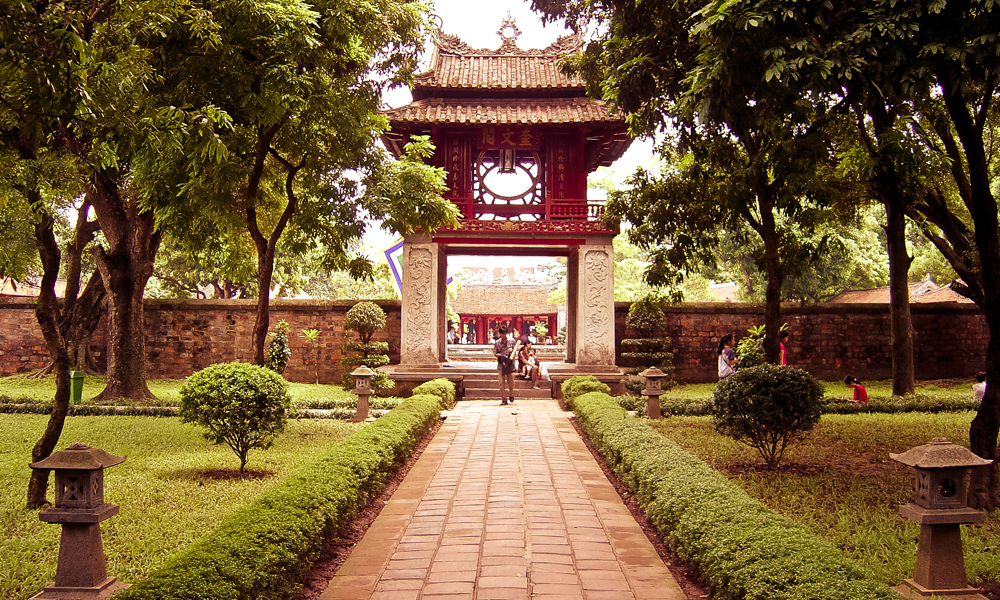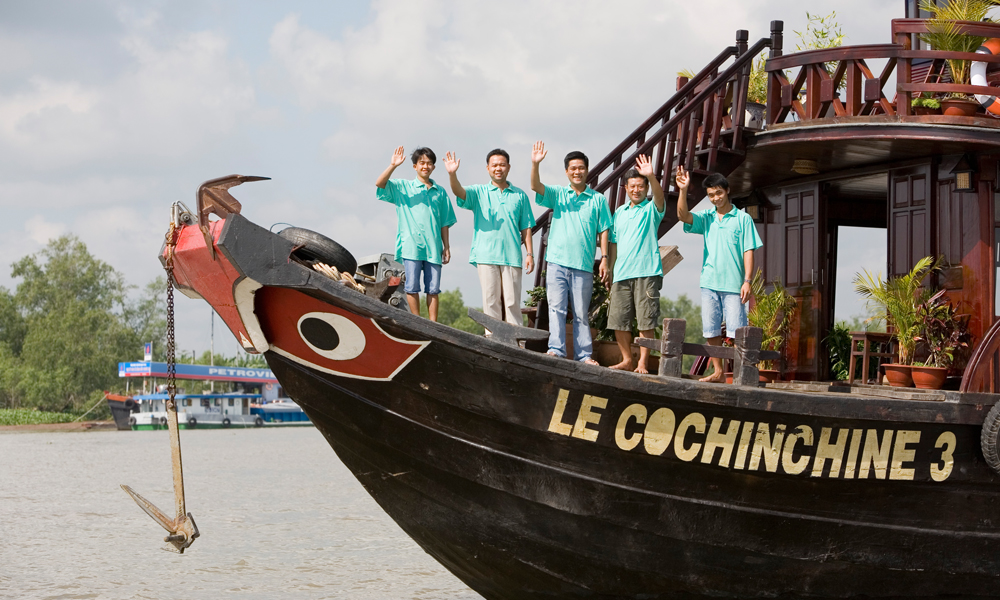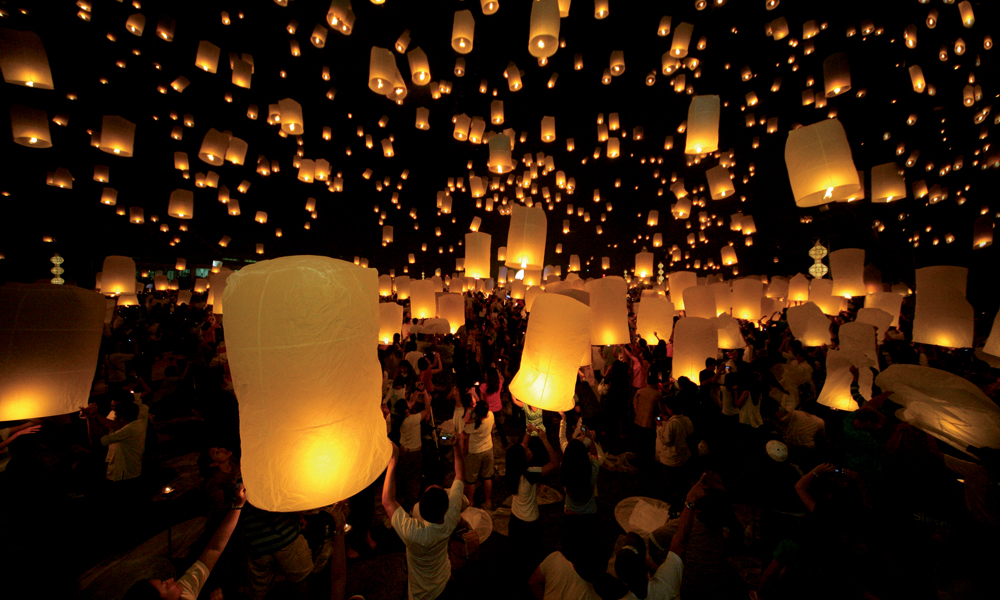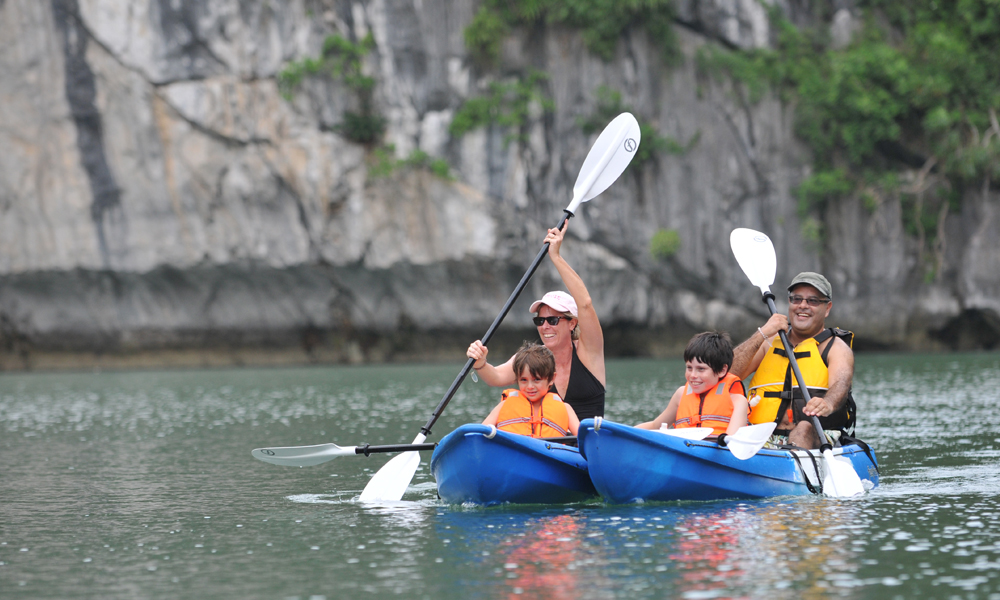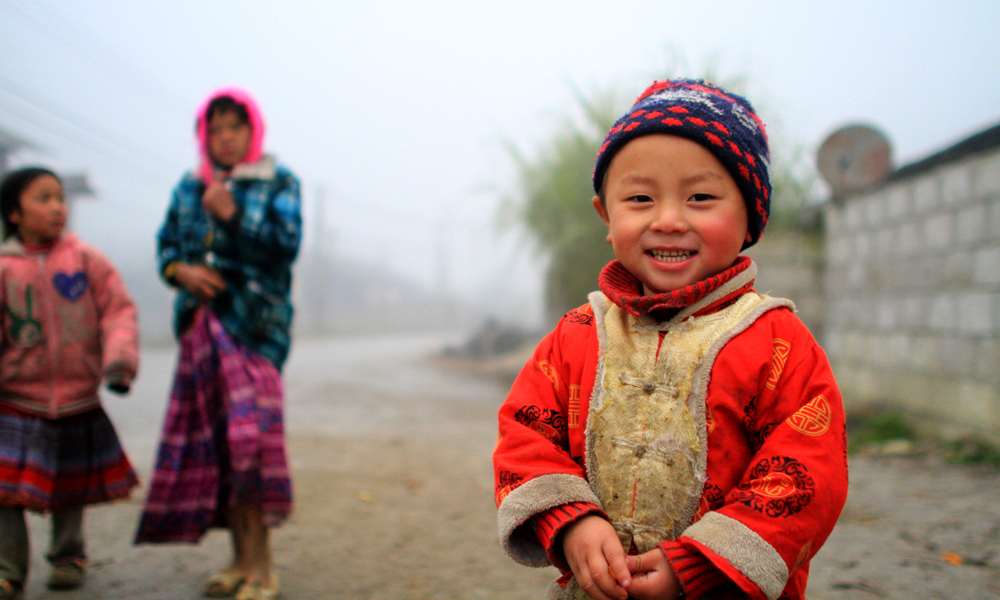1/Soak in the atmosphere at Phnom Penh Capital
Phnom Penh is the vibrant bustling capital of Cambodia. Situated at the confluence of three rivers, the mighty Mekong, the Bassac and the great Tonle Sap, what was once considered the ‘Gem’ of Indochina. The capital city still maintains considerable charm with plenty to see. Beside the Royal Palace, the Siver Pagoda, the National Museum, the Choeng Ek Killing Fields and Wat Phnom Temple, there are also several market places where the locals sell carvings, paintings, silk, silver, gems, antiques or even insect food. Indeed, an ideal destination for a leisurely day tour.
2/Marvel at the Angkor Vat Complex
This UNESCO World Heritage is a 1,000 year-old temple complex near the city of Siem Reap in the north central part of Cambodia. Visiting the ancient Angkorian temples is the reason most visitors come to Cambodia, and to Siem Reap. With its five lotus-like towers rising 65 meters into the sky, it is truly a monumental, and awe inspiring sight, Angkor Wat is the crown jewel of any visit to the temples of Angkor. There are no hotels within the park grounds, and most visitors to the ancient temples stay in Siem Reap, using it as a base from which to make daily visits to the temples. It is highly recommend to visit early—or late, and taking it easy: Start before sunrise and take three or four hours to take in the raw scale and delicate beauty of the ruins.
3/Witness the passage of time at Angkor Thom
Angkor Thom, the last capital of the Khmer Empire, was a fortified city enclosing residences of priest, officials of the palace and military, as well as buildings for administering the kingdom. The south gate of Angkor Thom is 1.7 km north of the entrance to Angkor Wat, 7.2 km north of Siem Reap and is now the most often visited, as it is the main entrance to the city for tourists. At the centre of the city is Jayavarman's state temple, the Bayon, with the icons are the Bayon’s giant stone-carved Buddha faces. Their massive silhouettes jut out from the intricate towers of the temple, their mysterious smiles enchanting all who come to see the silent witnesses to the centuries of history. There are also several other highlight within Angkor Thom such as: Baphoun, Phimeanakas, Preah Palilay, Elephant and Leper King Terrace, etc.
4/See the great lake Tonlé Sap Lake & Floating Villages
The Tonlé Sap Lake (the Great Lake) is a combined lake and river system in Cambodia. It is the largest fresh water lake in Southeast Asia and the richest fishing lake in the world. The lake also constitutes one of Cambodia's most important sites, rich in natural resources. There are some famous floating villages such as: Chong Khneas, Kampng Phluk, Kampong Khleang and Prek Toal. Due to a unique hydrological phenomenon, when the monsoon begins, the swollen waters of the Mekong River force the Tonle Sap River to reverse its flow northwards, feeding the Great Lake and spreading over the surrounding flood plain. So, the best time to see the lake is when the water level is high, and floating villages around are truly floating, and trips to the flooded forest and wildlife reserves are interesting. Trips to the bird sanctuaries are best from December to April.
5/Explore the beautiful tropical Bamboo Island
About 10km off the coast of Sihanoukville’s coast, Koh Russei or Bamboo Island is a small secluded tropical island. It is a barely-touched stretch of yellow sand, a complete serenity. No hawkers, no hassle except three bungalow resorts, two restaurants and two bars and are very, very laid back. You will not find TV or internet or even roads on here but what you will find is warm, blue, crystal-clear water, perfect for swimming, soft golden sandy beaches, lush natural surroundings, and a lot of peace and tranquility that you won’t come across in many other so-called ‘relaxed’ destinations. Just you and sea. This is serenity at its best so it comes highly recommended.
6/Enjoy Khmer Food
The tantalizing Khmer cuisine will introduce an extraordinary variety of taste and flavour to your palate. Healthy and delicious, the traditional recipes have been influenced by Vietnamese, Thai, Indian, Chinese and even French culinary trends. To create the succulent dishes, Khmer cuisine utilizes an array of zesty herbsand spices: galangal, lime, garlic, turmeric, lemon grass, ginger and tamarind, and fish sauce—bringing about great culinary experiences—at fine restaurants and street food stalls alike.
7/Experience the traditional Apsara Dance Show
The apsara dance is an ancient art form that have played a major part in Khmer culture for more than thousand years. The tradition has seen a great revival in the last decades. The quality range from cheesy to well-executed and many places have regular shows in Siem Reap (Apsara Theatre in Angkor Village has two performances every night). If you have a chance to see a good troupe then it is an absolute must.






